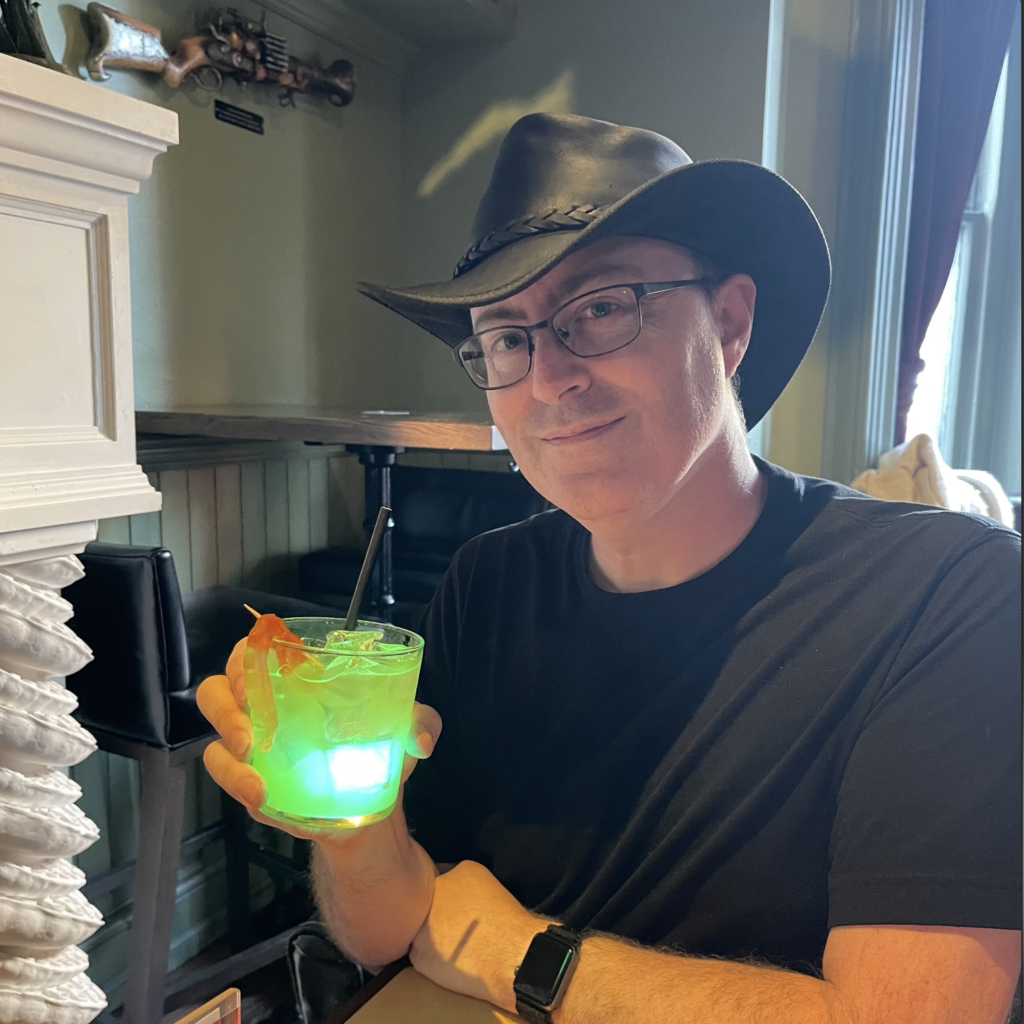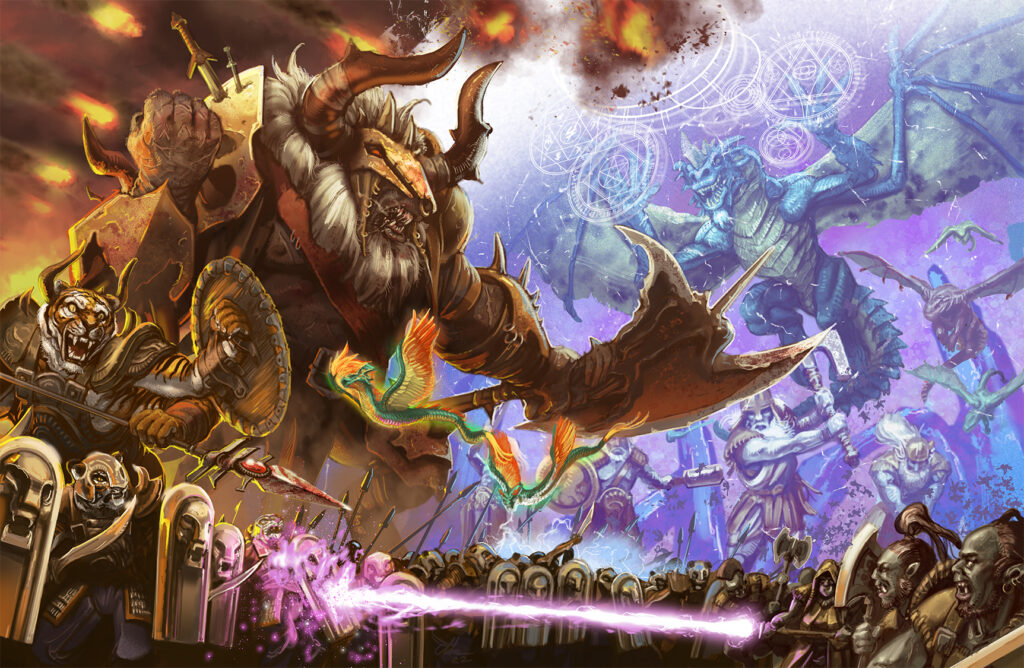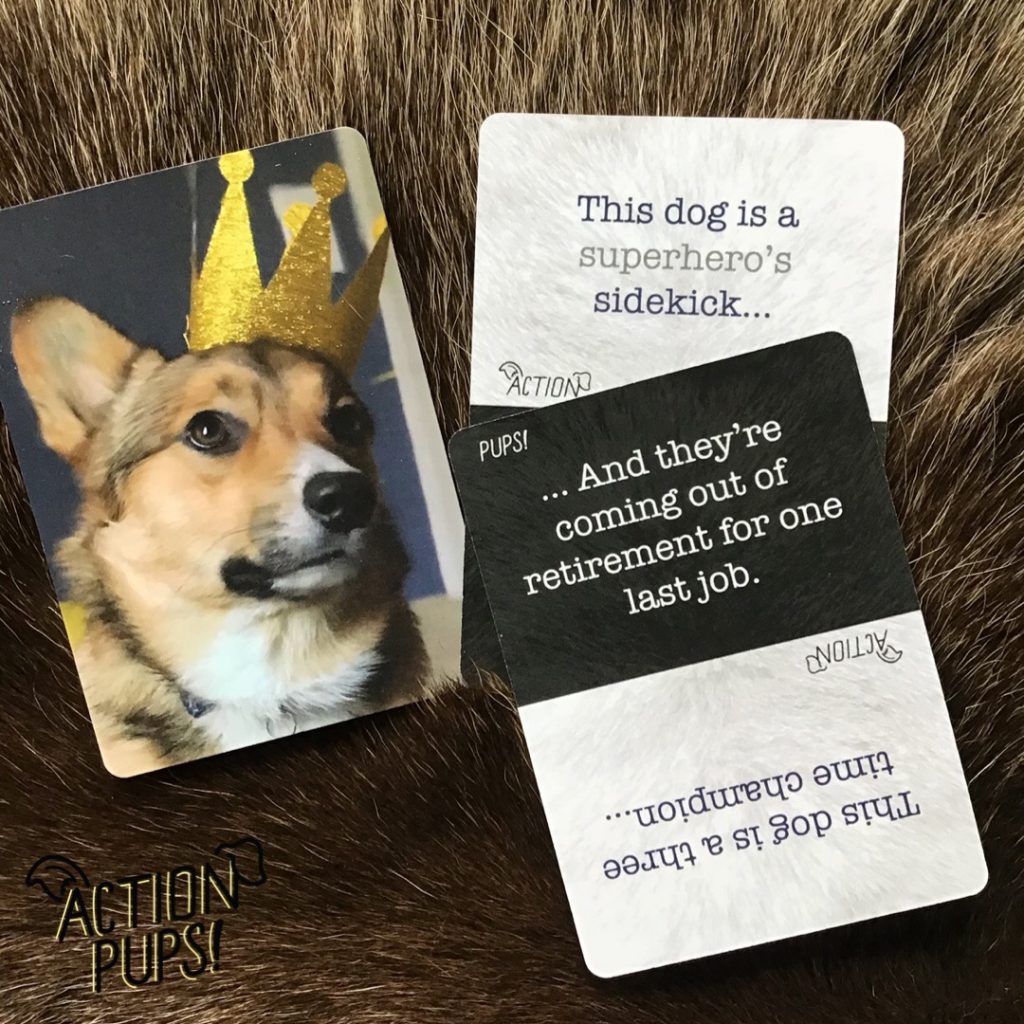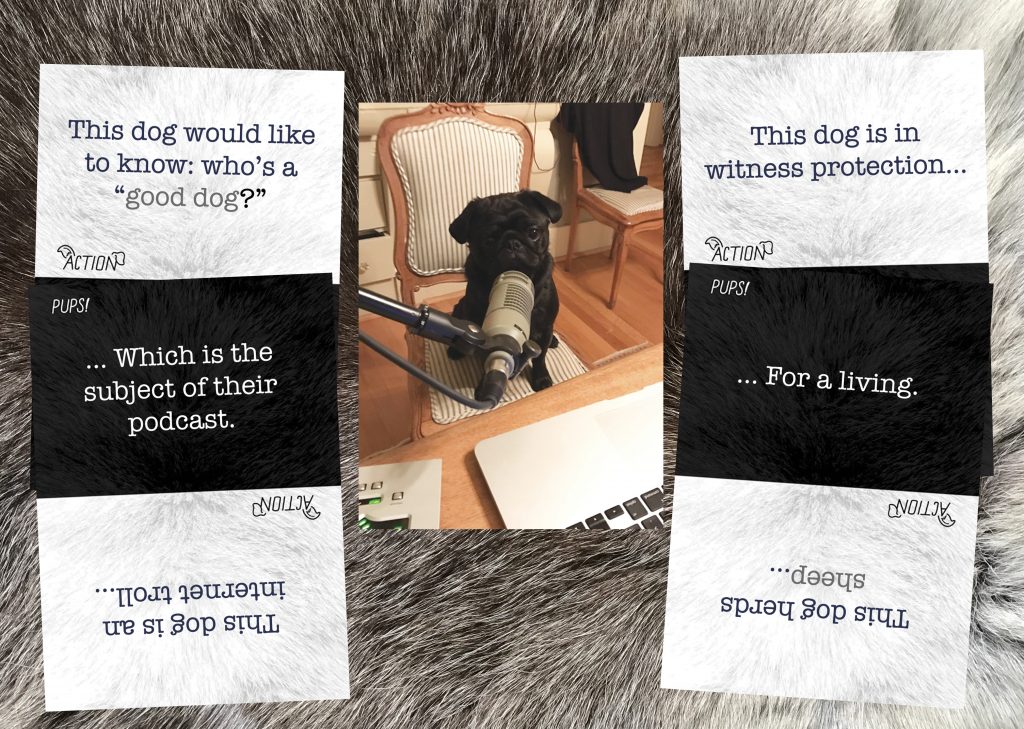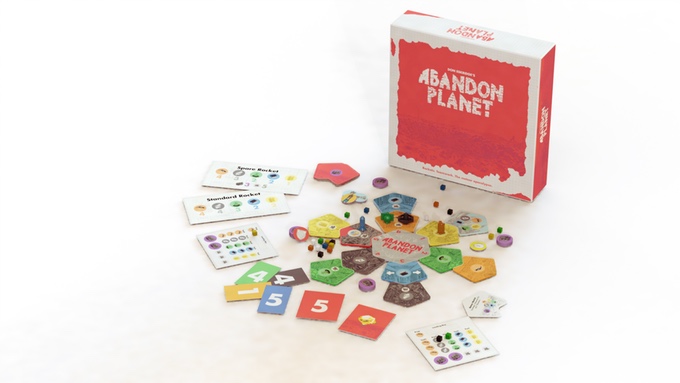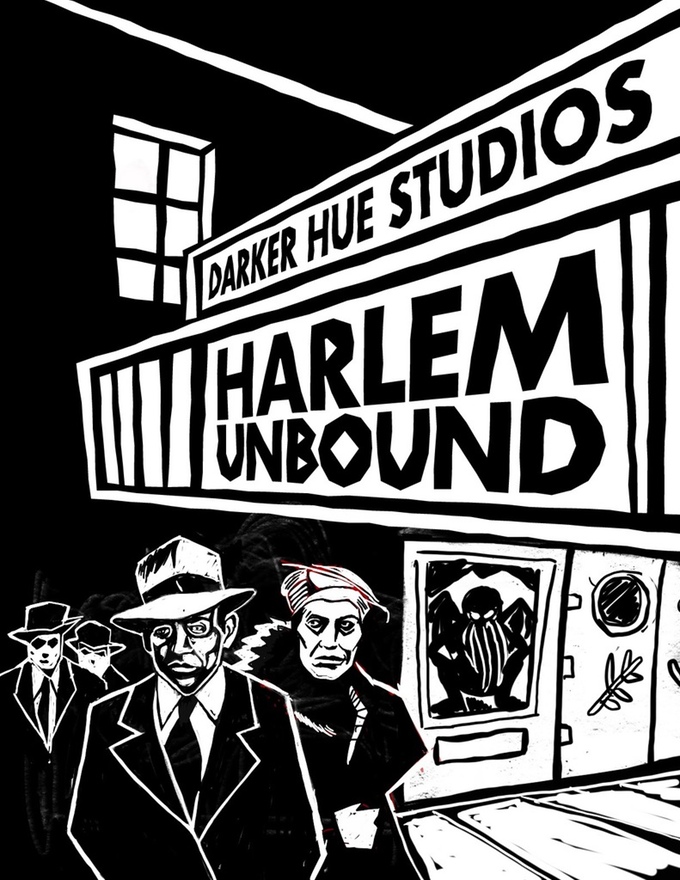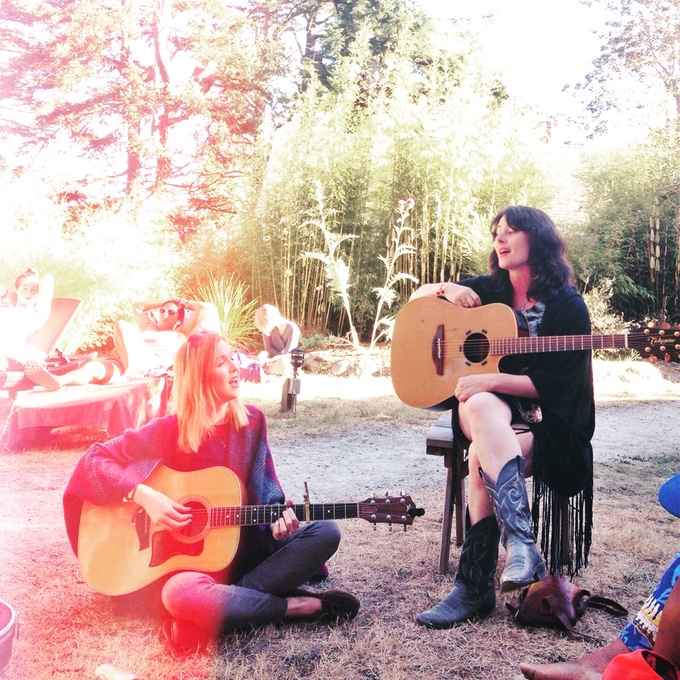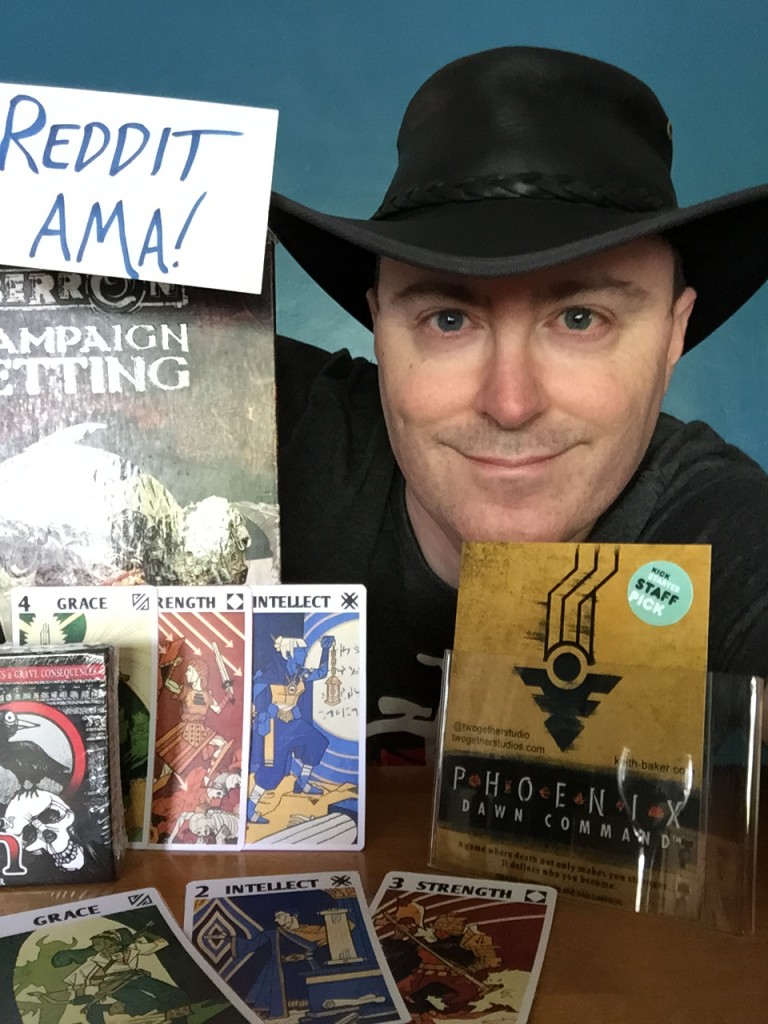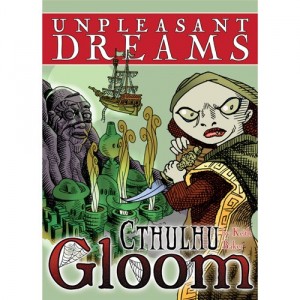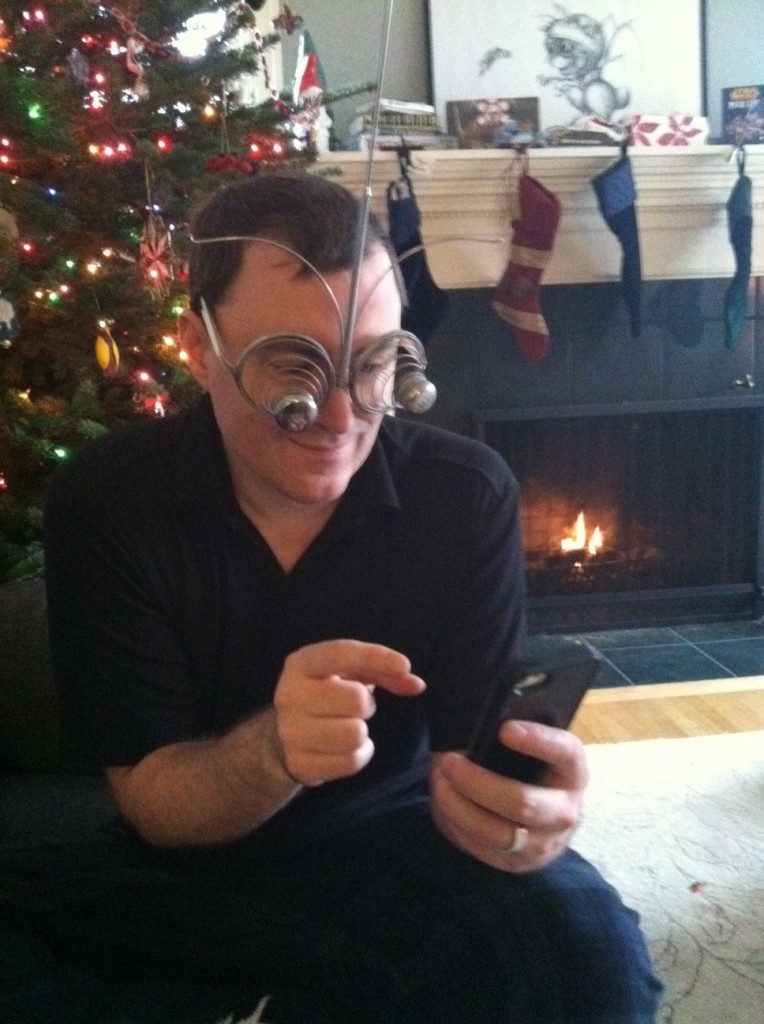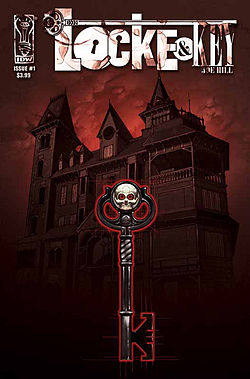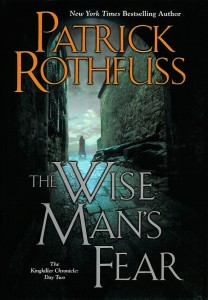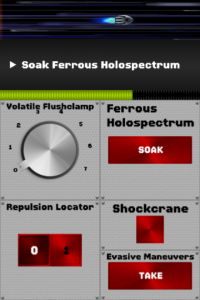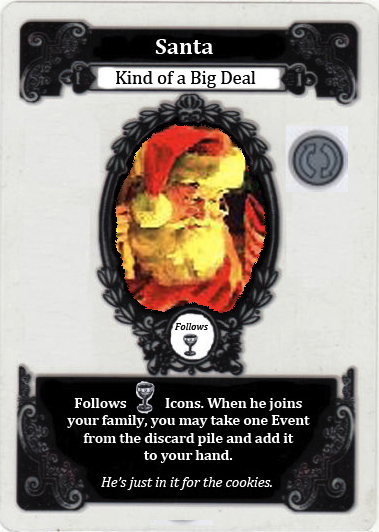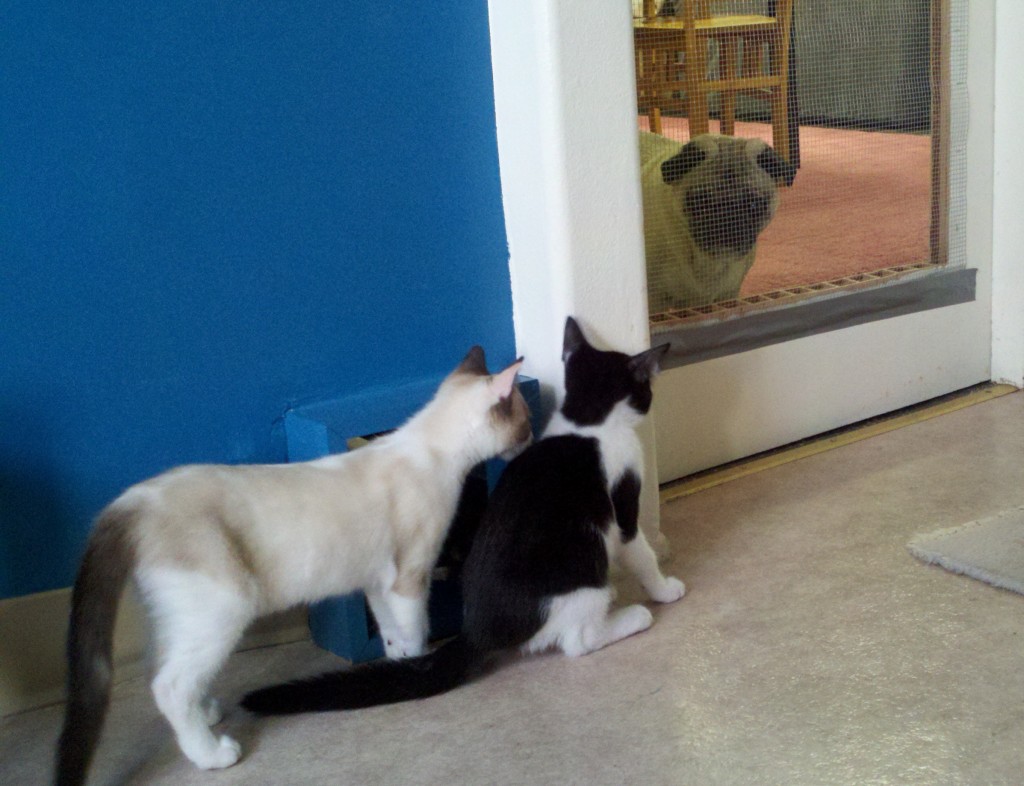
By many measures, humanity and its cousins may seem to be the weakest of Eberron’s children. Compare me to a simple housecat. My eyes can’t pierce the gloom of night. I have no claws and my teeth are poor weapons. I have no fur to protect me from the cold, and if I fall my bones will break. It may seem that I’m a poor creation next to my little friend. But what I have is the blessing of Balinor — the promise of dominion over all of the beasts of land, sky, and sea. I don’t need the strength of the tribex, because I have the tribex to bear my burdens. I don’t need the wings of a bird when I have a hippogriff to carry me through the air. I wear no crown, but I’m a prince of the wilds.
When people think of the Dragonmarked Houses, the first names that are spoken are usually Lyrandar, Cannith, or Orien. People think of airships with their rings of fire, the lightning rail stretching across the land, House Cannith producing siege staffs and warforged titans. House Vadalis is a quiet house, easily overlooked. And yet, Vadalis is an integral part of life in the Five Nations. Mounts, beasts of burden, agricultural livestock, guardian beasts, pets—all of these are tied to the Handler’s Guild. There are Vadalis heirs who spend their lives producing dairy products or eggs. Of course, most farms and farmers aren’t directly tied to the house. But in the Five Nations, most farms associated with livestock are licensed by Vadalis. The House enforces health standards, provides veterinary care, and breeds and sells the finest stock—including magebred beasts and monstrosities. Vadalis runs the trade schools and offers expert advice. So magebreeding and monstrosities may be the aspects of the house that fire the imagination, but the bulk of the work of the Handlers Guild is comparatively mundane.
As an heir with the Mark of Handling, where others hear barking dogs or singing birds, you can hear intent and emotion. All you have to do is concentrate—taking a few minutes to meditate on your mark—and that noise resolves into meaning. You can speak with any animal, and if you focus through your mark, you can compel obedience. And these are just the simplest gifts of the Mark. While it’s easiest for Vadalis heirs to manipulate beasts, some develop the ability to influence the behavior of any creature, at least momentarily. Others are able to manifest spirits—imagining an animal with such intensity that it briefly becomes real.
All of these things are woven into everyday life in Vadalis communities. If you’re a Vadalis heir, you’ve grown up surrounded by familiars, awakened beasts, and all manner of mundane service animals. Between Dragonmarked heirs and Magewrights, nearly half of the members of the house have the ability to cast Find Familiar. In addition to the many ways in which they can be practical tools, Vadalis heirs use familiars to express their personality, their current mood, and as a fashion accessory. Remember that the form of a familiar can be changed every time the ritual is performed, so familiars can be adapted to match an outfit or used to make a specific statement. If a Vadalis heir has a bright red serpent wrapped around one arm, it means I’m busy, leave me alone; conversely, an Aundairian Silver parrot on your shoulder means I’m in a mood to talk, come say hello! Sparrowmonkeys are often used as assistants, whether Awakened or simply well-trained. Keep in mind that’s sparrowmonkey, not sparrow monkey; it’s the same principle as the owlbear. Vadalis sparrowmonkeys are small winged primates that use the Winged Monkey stat block from Tomb of Annihilation (Small Beast; AC 12, HP 3, 20 ft speed, 20 ft Climbing, 30 ft flight).
Many Vadalis heirs dislike major cities and large crowds of humanoids. Most prefer to be out in the country and around beasts. However, it’s a mistake to think that Vadalis heirs seek to defend the natural world or that they have much in common with druids. Vadalis heirs dislike cities and crowds; but most are quite happy with their ranches and farms. And their powers don’t come from an understanding of Primal mysteries, or any devotion to balance or tradition. The Mark of Handling gives an heir the ability to understand beasts and to control them. Some heirs—notably the Grayswift family—believe in empathy and compassion for the creatures they work with, often going so far as to treat their animal companions as members of their family. But the majority of the heirs of House Vadalis believe that their Mark gives them dominion over the natural world. Beasts are tools to be used for the benefit of the house, and more broadly, humanoid civilization. Many further assert that as a House, Vadalis has the power and the duty to improve upon nature—that what exists is a foundation, but that Vadalis ingenuity will make things better. In creating a Vadalis character, consider if they accept this idea — that Vadalis has the right to bend nature to its will—or if they are more empathetic.
This philosophical divide is complicated by the fact that Family and House are deeply important to Vadalis. Heirs are expected to place the good of the House above all, and the good of kin above anything else. Vadalis heirs know their family trees by heart, and the closer you are in blood, the more loyalty is expected of you. But even beyond direct relatives, all Vadalis heirs are taught to consider any other heir of the house as a cousin, as someone worthy of trust and devotion. Betraying another member of the house is a serious crime and can be cause for excoriation. When another Vadalis is in need, you are expected to offer sympathy at the least, and help when possible. There are limits to what can be expected from this; as a Vadalis heir, you can’t go into a Vadalis stable and demand their best mount. Surely, you don’t need their best mount, and you’d be inflicting financial hardship on them if they just gave it to you. But if you are truly in need—if there is a real emergency, and you have to get to Varna by the end of the day—they might lend you a riding Tribex, or prevail on the local stonespeaker to send a message on your behalf. They will treat you as family, and do what they can to help you. But any such demand and aid is always noted by the House, and you will be marked if you regularly take more than you give; if you receive significant assistance, you may find yourself being called upon to repay that aid with service to the family. So there are sharp divides within the House—the Grayswifts dislike the Lavarans—but they are still kin, and expected to set aside those differences when an heir is in trouble.
THE MARK OF HANDLING
The Mark of Handling allows its bearer to understand beasts and to control them. Under the latest version of the rules, anyone who bears the Mark of Handling knows Speak With Animals and Animal Friendship and can cast each of these once per day without using a spell slot. As Speak with Animals is a ritual spell it can be used at will (with a ten minute casting time). The Mark of Handling also gives its bearer the ability to cast Speak With Animals and Animal Friendship on Monstrosities, provided the Monstrosity has an Intelligence of 3 or below. So, a Vadalis heir can befriend a Rust Monster, Basilisk, Carrion Crawler or Bulette as easily as a dog or a tribex.
So at its most basic level, the Mark of Handling allows its bearer to communicate with beasts and to influence their behavior. Animal Friendship is a subtle, long-term effect. But Vadalis heirs can learn to use the Mark of Handling to “handle” creatures more roughly, forcefully shifting thoughts for a short period of time. Command, Confusion, and Hold Monster all reflect a mental demand or disruption, while Beacon of Hope and Calm Emotions are soothing effects. The idea of the Mark of Handling is that it focuses on Beasts (and low-intelligence monstrosities) and most NPC heirs can only cast these spells on such creatures; Calm Emotions is still about calming Beasts, not people. But there’s always been stories about Vadalis heirs being able to using the Mark of Handling to “handle” people—and that’s because some can. An adventurer with the Mark of Handling can use these Spells of the Mark on any creature. Exceptional Vadalis NPCs can as well, although many prefer not to. But there are some within the House who hone this gift even further, learning to cast Charm Person, Charm Monster, Suggestion, or even Dominate Person. Vadalis tradition discourages using the Mark in this way—but there are Handlers out there with this power.
Mental manipulation is one aspect of the Mark of Handling. But the Mark can also grant the bearer the power to conjure animal spirits—to imagine an animal so vividly that it becomes almost real. The simplest form of this is Find Familiar; the heir imagines a creature and dreams it into a temporary reality. Beast Sense is an extension of this. An heir can always see through the eyes of their familiar. When using Beast Sense, they are essentially conjuring a familiar spirit and implanting it within the targeted beast, and that’s the foundation of the sensory link; they are seeing through the spirit they’ve planted within the beast. This is also the principle behind Vadalis Awakening. When a Vadalis heir casts Awaken, they aren’t actually raising the intelligence of the target creature. Instead, they are producing a familiar spirit and giving that spirit control of the target beast; it’s effectively the same as the quori Mind Seed, except that the spirit is a blank slate that doesn’t have the memories or skills of the caster. But the spirit is still a product of the caster’s mind, and Vadalis-awakened creatures often share personality traits or quirks with the person who Awakened them. Conjure Animals is less focused and more forceful, creating a purely spiritual manifestation; this is a relatively rare power of the Lesser Mark, and relatively few heirs can produce it. In my campaign, NPC Vadalis heirs can only use Awaken on Beasts; they cannot Awaken plants. A player character with the Mark of Handling could be an exception to this rule—but Vadalis isn’t known for working with plants.
Kanon versus Canon. Two spells on this list are marked with asterisks, and that’s because they aren’t on the canon Spells of the Mark of Handling list as they will appear in Forge of the Artificer. This is because I’m changing the list for my campaign. The first change is that I’ve replaced the canon spell Aura of Life with Confusion. Aura of Life protects allies from Necrotic damage and restores people with 0 HP to 1 HP. It is a life-affirming healing effect, and in my opinion has nothing in common with the other spells on the list. Even Beacon of Hope is an EMOTIONAL effect rather than a physical one. Thus, I’ve replaced it with Confusion, building on the idea that if you can Command and Calm Emotions, you could disrupt thought and Confuse. Finally, by canon the only 5th level Spell of the Mark is Awaken. My issue with this is that Awaken is an extremely limited spell. It has an eight hour casting time and a 1,000 GP consumable component. It’s not a spell that an adventurer can use all the time, and I feel that makes it a poor choice. Hold Monster is a simple, useful spell for an adventurer that fits the idea of emotional demand—aggressive “handling” disrupting thought. So in my campaign, I’ll offer it as a choice; an heir of the Mark has to decide which of these two talents they possess. And as noted above, in my campaign Vadalis Awaken can’t be used on plants.
By the rules as written, Calm Emotions only works on Humanoids. This is a spell canonically assigned to the Mark of Handling, and this makes little sense if it only works on Humanoids. In the original 3.5 Eberron Campaign Setting the Mark granted access to Calm Animals—but that spell doesn’t exist in 2024. As such, in my campaign I’m adding the following sentence to the Primal Connection trait of the Mark of Handling feat: “You can target Beasts when you cast Calm Emotions.”
Monarchs and Druids. The Spells of the Mark reflect the most common powers granted by the Mark of Handling. These gifts don’t require any sort of Primal connection or Druidic training. Any Vadalis spellcaster—Wizard, Cleric, Sorcerer—can use spell slots to produce these effects, and the Potent Dragonmark feat allows any character to cast them; I generally treat Dragonmarked NPCs as having a form of Potent Dragonmark. However, I’ve also talked about a special sort of Vadalis spellcaster—a Vadalis character who has the powers of a Druid. Within the House, these people are called Monarchs, tied to the idea that the Dragonmark grants them dominion over nature. Vadalis Monarchs have access to Druidic abilities, including Wild Shape and expanded spellcasting; they typically follow the Circle of the Land or Circle of the Moon. However, as with the basic powers of the Dragonmark, these aren’t tied to Druidic devotion and are entirely driven by a powerful connection to the Mark of Handling. While a player character Monarch can cast any spells from the Druid spell list, most Vadalis Monarchs are limited to spells that directly affect animals (Animal Messenger, Locate Animal), that can be depicted as coercion or manipulation (Hold Person, Charm Monster), or which involve transmutation (Polymorph, Enhance Ability, Enlarge/Reduce, healing effects). This talent for transformation is the seed of Vadalis magebreeding. Relatively few heirs are able to master the powers of the Vadalis Monarch, but the seed is there and can be drawn out with focus items. The point of all of this is that House Vadalis has a significant number of heirs with powers that resemble those of Druids, but who have no tie to the Druidic mysteries—and the Ashbound in particular despise Vadalis Monarchs. With that said, there ARE Vadalis heirs who do embrace Druidic traditions, most often tied to the Grayswift family.
FOCUS ITEMS
Vadalis heirs use Channeling Rods, Dragonmark Channels, and Dragonmark Reservoirs, and they’ve crafted unique items like the Collar of the Wild Bond to enhance the powers of the Mark. But they’ve also developed focus items and Eldritch Machines that are crucial to the business of the house but which have little application for adventurers. Balinor’s Blessing is one example of this; they are used at Vadalis ranches to enhance the health and virility of livestock. Other items ease the process of childbirth, help with long-term animal training and domestication, or play a crucial role in the process of Magebreeding. The Mark alone doesn’t grant spells related to Magebreeding; it’s through focus items and rituals that Vadalis heirs are able to produce these effects.
Balinor’s Blessing
Eldritch Machine (requires attunement by a creature with the Mark of Handling)
This six-foot stone pillar is engraved with the patterns of the Mark of Handling. As long as a creature with the Mark of Handling is attuned to the pillar—a process that must be repeated every day—It has the following effects within a 2000 foot radius.
- Beasts have advantage on Constitution saving throws. They are remarkably healthy, fertile, and resistant to mundane disease.
- Beasts have disadvantage on saving throws to resist any spell effect associated with the Mark of Handling.
- Any creature with the Mark of Handling has advantage on Charisma (Animal Handling) checks.
Collar of the Wild Bond
Wondrous Item, varies
If you possess the Mark of Handling, you may use a Magic Action to cast Dominate Beast on a Beast you can see that’s wearing a Collar of the Wild Bond. This doesn’t use a spell slot, but the other limitations of the spell apply. The effect has a range of 60 feet, and the creature can negate the effect with a successful Wisdom saving throw; your spellcasting ability for this effect is the same one you chose for the Mark of Handling. You must concentrate to maintain the effect, but as long as you are within 200 feet of the creature, you can maintain the spell indefinitely.
There are two forms of Collar of the Wild Bond. The Uncommon Collar only works on Beasts. The Rare version of the Collar can be used on Monstrosities with an Intelligence of 3 or less.
Scepter of Wild Dominion
Rod, Rare (requires attunement by a creature with the Mark of Handling)
While holding this rod, you have the following benefits.
- You gain a +2 bonus to the Saving Throw DC of your Spells of the Mark.
- You cast Spells of the Mark as if using a spell slot one level higher than the slot you actually expend.
- You may cast Command, Animal Friendship, and Speak With Animals without using a spell slot.
MAGEBREEDING
When most people hear “Vadalis,” they think of magebreeding. This is a term that has many meanings. Let’s start with the earliest description.
The widespread use of magic on Eberron has led to the development of magical enhancements to animal breeding, particularly within House Vadalis. Some experiments in that direction have created new creatures that are actually magical beasts, with unusual intelligence and supernatural or spell-like abilities. In general, however, the aim of these breeding programs is simply to create better animals—ones that are more suited for use in the work of daily life. These magically enhanced animals are called magebred.
Today, House Vadalis identifies three distinct forms of magebreeding.
Incremental magebreeding is similar to breeders in our world trying to produce a new breed of dog. The result is a slight variation in the standard beast well suited toward a particular role: a hen that lays larger eggs, a tiger that’s easier to train, a hound that thrives in colder climates or has a remarkable sense of smell. One concrete example of this is the Riding Tribex (seen in Frontiers of Eberron: Quickstone). For thousands of years, the Plains Tribex has been bred as a beast of burden and source of food. The Riding Tribex is smaller and faster—sturdier than a horse and capable of enduring long, sustained trips.
Enhanced magebreeding seeks to strengthen a creature, imbuing it with minor supernatural qualities. The Magebred Animal template in the 3.5 Eberron Campaign Setting suggests the following changes:
- One of Strength, Dexterity, or Constitution is increased by 4; the other two ability scores are increased by 2.
- Armor Class is increased by 2, reflecting increased overall durability.
- Magebred animals are easier to train, can learn more tricks or maneuvers than purely mundane creatures, and the DC of Animal Handling checks involving the beast is reduced by 2.
- The creature gains either a +10 bonus to one of its movement speeds, an additional +2 bonus to armor class, or a bonus to tracking checks.
These creatures are still considered beasts; in 3.5 D&D terms, they were limited to an Intelligence of 2. A few critical points about this template. It’s intended to reflect BREEDS of magebred animals. So Redleaf hounds all have +4 Dexterity and a bonus to tracking; it’s not as though two pups in the same litter each get to choose whether the +4 goes to Strength or Dexterity, or whether they get the boost to movement or tracking. House Vadalis created the first Redleaf hounds through active enhanced magebreeding; but ever since then, Redleaf Harriers have bred that enhanced line, while the innovative magebreeders have moved on to other things.
The second point is that this is a simple template that is intended to give a broad example of what can be done. The template only suggests a possible bonus to movement, armor class, or tracking checks. But I could see any of the following as being the sort of features that enhanced magebreeding could produce:
- Increased fertility; increased laying for egg-laying creatures, along with potentially unusual egg characteristics.
- Animals used to provide meat or dairy could be magebred to enhance these aspects, whether that’s simply increasing the quantity or adding an unusual quality (flavor, color). This is how you get the cow that produces chocolate milk.
- Heightened senses; a magebred falcon might have a bonus to Perception instead of Survival.
- Specific resistances: creating a creature that doesn’t just have thick fur, but that is actually resistant to cold damage.
- Unnatural appearance. A horse with metallic, silvery fur; a hound with glowing eyes; cats that always have identical markings.
The key points here are that the general goal of enhanced magebreeding is to produce new breeds with hereditary traits and generally requires generations to produce results. They don’t take an existing horse and give it metallic fur; they easily COULD with cosmetic transmutation, but it wouldn’t last. Instead they work to instill a trait over multiple generations, that will thereafter be passed down to offspring. Typically enhanced breeds are only available to bound businesses in the Handler’s Guild, and enhanced beasts are sterilized before they are sold to others. Stories say that there are all sorts of safeguards to deal with poachers—that enhanced animals will die if they aren’t fed special Vadalis supplements, that they will frenzy and turn on rustlers, that Vadalis has death squads that sneak around the world hunting for unauthorized breeders—but these are probably just rumors. Probably.
Innovative magebreeding involves the creation of either an entirely new species or imbuing an existing creature with dramatic supernatural characteristics. Popular legend holds that the house’s first act of innovative magebreeding was the production of the hippogriff; skeptics claim that Vadalis simply discovered the first hippogriff after it emerged from a manifest zone tied to Kythri. A more recent and dramatic example is the Tressym, first produced just twenty-four years ago. The house is always working on innovative projects, but actual successes are far and few between; innovative creations are often sterile, stillborn, or mentally unstable. Many innovative creatures are Monstrosities as opposed to Beasts.
While it’s more colorful and exciting than, say, dairy farming, magebreeding is a tiny fraction of the work of House Vadalis. Ranches and kennels tied to the Handler’s Guild may perform iterative magebreeding, but enhanced and innovative magebreeding is performed almost entirely within house enclaves or in conjunction with the Twelve. The Tressym was produced through collaboration with House Medani, and there are stories of Vadalis working with House Jorasco on ghastly experiments involving troll’s blood and medusa’s eyes.
So what does a magebreeding facility actually look like? What is the daily work that goes on within? The following tools are used in magebreeding.
- Manifest Zones. Zones tied to Kythri and Lamannia are both highly prized by House Vadalis, though any zone can have value; a Risian manifest zone could be crucial when trying to breed a creature resistant to cold. Sometimes this is about creating a facility in a manifest zone, but often it involves using secondary materials, such as foodstuffs grown in the relevant manifest zones or harnesses formed from planar materials.
- Focus Items and Eldritch Machines. As described earlier in this article, Vadalis magebreeders use focus items that help them both to maintain control of beasts through the process of magebreeding, compel necessary behaviors, shape instincts, and monitor the state of their charges. Eldritch Machines can serve more dramatic purposes; one that comes to mind is the Spire of Growth, a monolith that accelerates the aging of any beasts within its radius; these help with generational breeding, though these spires are expensive to create and dangerous to maintain (supposedly they don’t affect humanoids…). In general, Eldritch Machines that produce truly dramatic effects are likely to be either unique or experimental, and may become unstable or require a steady supply of dragonshards.
- Rare Components. As noted before, Vadalis has been experimenting with troll’s blood. Innovative and enhanced magebreeding often uses transmutation techniques to imbue a creature with the qualities of another creature; this can require organs, blood, or other elements of the creature with the desired trait. Likewise, planar resources can be important in magebreeding.
- Transmutation Magic. Magebreeding can involve a wide array of transmutation rituals, most of which have little practical application to adventuring: rituals to enhance fertility, highly specific Polymorph effects, rituals that simply increase a beast’s chances of surviving the transfusions and other operations it’s going through. A side effect of this is that there is a corps of specialists within Vadalis who excel at cosmetic transmutation (as described in Exploring Eberron). This is rarely a service they perform for humanoids, but there is at least one Vadalis transmuter who runs a business altering the new pets of rich clients to match the appearance of a deceased pet. As a general rule, Polymorph alone doesn’t allow successful breeding; Polymorphed creatures are functionally sterile while under the effects of the spell, so while you can turn a cat into a dog for an hour, if it mates with another dog in that time it won’t end up producing either puppies or kittens. This is certainly something Vadalis has and continues to experiment with, but lasting change isn’t as simple as a single 4th level spell.
So the point is that magebreeding facilities often look like farms or veterinary hospitals, with special chambers for performing rituals or imbuing planar energies. But magebreeding is invariably a long-term process, involving both breeding and the careful study of multiple generations. Vadalis is always searching for ways to produce swifter and more dramatic results… And these efforts often end in disaster, or at least adventure!
This is an excerpt. The full article is three times as long, and explores the history, structure, and families of House Vadalis. To get access to the full article, check out my Patreon!

